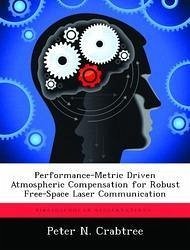Nicht lieferbar

Integrated Approach to Airborne Laser Communication
Versandkostenfrei!
Nicht lieferbar
Lasers offer tremendous advantages over RF communication systems in bandwidth and security, due to their ultra-high frequency and narrow spatial beamwidth. Atmospheric turbulence causes severe received power variations and high bit error rates (BERs) in ariborne laser communication. Airborne optical communication systems require special considerations in size, complexity, power, and weight. Conventional adaptive optics systems correct for the phase only and cannot correct for strong scintillation, but here the two transmission paths are separated sufficiently so that the strong scintillation i...
Lasers offer tremendous advantages over RF communication systems in bandwidth and security, due to their ultra-high frequency and narrow spatial beamwidth. Atmospheric turbulence causes severe received power variations and high bit error rates (BERs) in ariborne laser communication. Airborne optical communication systems require special considerations in size, complexity, power, and weight. Conventional adaptive optics systems correct for the phase only and cannot correct for strong scintillation, but here the two transmission paths are separated sufficiently so that the strong scintillation is "averaged out" by incoherently summing up the two beams in the receiver. This requisite separation distance is derived for multiple geometries, turbulence conditions, and turbulence effects. Integrating multiple techniques into a system alleviates the deleterious effects of turbulence without bulky adaptive optics systems. Wave optics simulations show multiple transmitters, receiver and transmitter trackers, and adaptive thresholding significantly reduce the BER (by over 10,000 times). This work has been selected by scholars as being culturally important, and is part of the knowledge base of civilization as we know it. This work was reproduced from the original artifact, and remains as true to the original work as possible. Therefore, you will see the original copyright references, library stamps (as most of these works have been housed in our most important libraries around the world), and other notations in the work. This work is in the public domain in the United States of America, and possibly other nations. Within the United States, you may freely copy and distribute this work, as no entity (individual or corporate) has a copyright on the body of the work. As a reproduction of a historical artifact, this work may contain missing or blurred pages, poor pictures, errant marks, etc. Scholars believe, and we concur, that this work is important enough to be preserved, reproduced, and made generally available to the public. We appreciate your support of the preservation process, and thank you for being an important part of keeping this knowledge alive and relevant.













